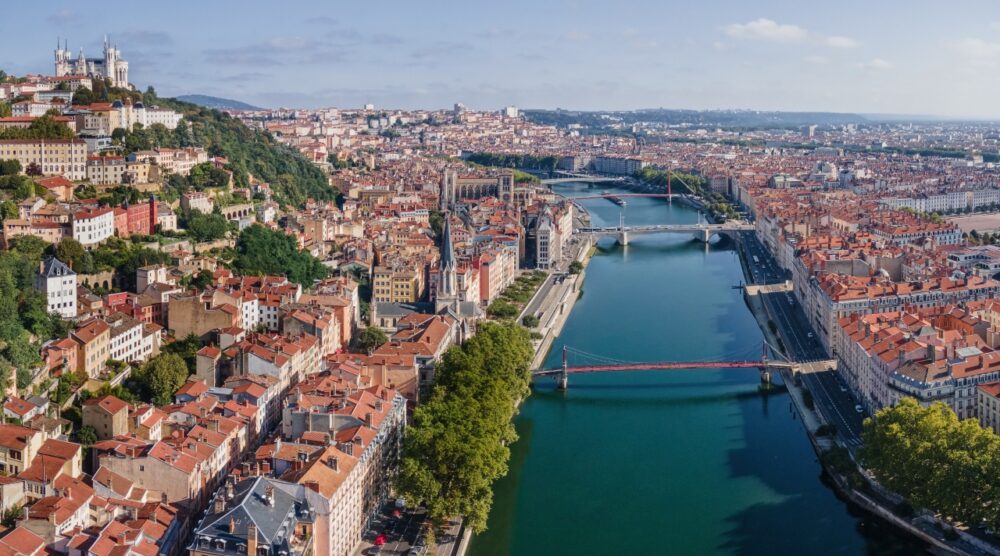
Is Lyon worth visiting? Without a doubt! The first time I visited Lyon, I was struck by how this city manages to balance its rich history with a dynamic, modern vibe. From wandering the cobbled streets of Vieux Lyon to dining at world-class restaurants, Lyon felt like a feast for the senses. As the gastronomic capital of France, it’s a place where every meal feels like an event and every corner has a story to tell.
Nestled at the confluence of the Rhône and Saône rivers, Lyon is France’s third-largest city and a UNESCO World Heritage Site. Known for its Renaissance architecture, vibrant cultural scene, and, of course, its incredible food, Lyon is a destination that offers something for everyone. Whether you’re exploring the Basilica of Notre-Dame de Fourvière, taking a stroll along the riverside, or sampling the delights of a traditional bouchon, Lyon invites you to savour its charm at every turn. But is Lyon worth visiting for you?
In this blog post, we’ll uncover the top 10 reasons why Lyon should be on your travel list, from its historic treasures to its culinary masterpieces. Plus, we’ll share travel tips to help you make the most of your visit. Keep reading, and you’ll see why Lyon is a city you’ll want to return to again and again.
Table of Contents
Pros – Reasons You Should Visit Lyon
1. A Perfect Blend of History and Modernity
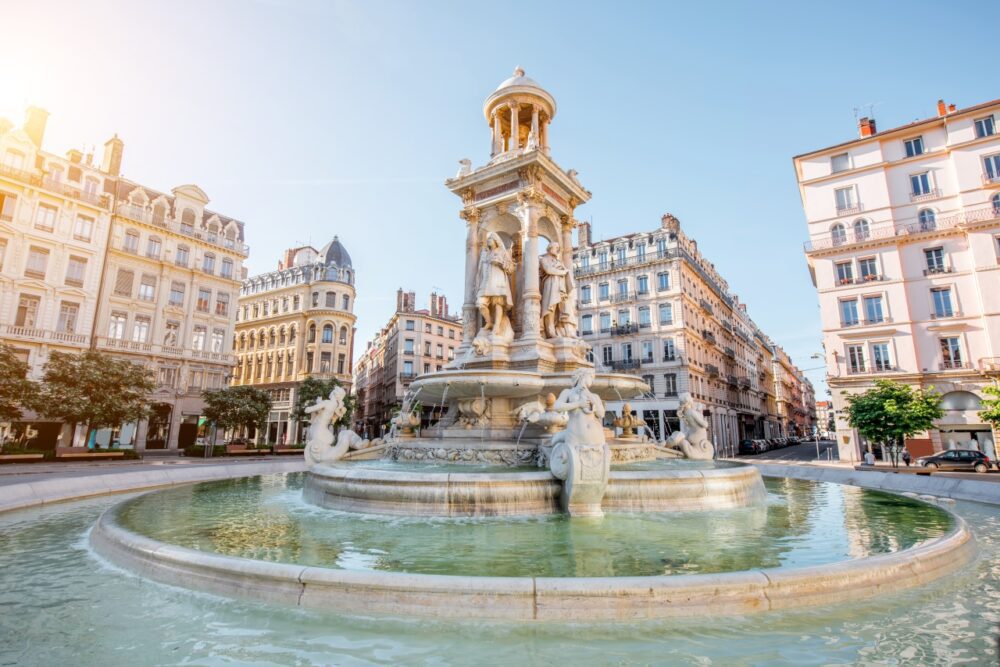
Lyon is one of France’s most fascinating cities, where centuries-old history meets a vibrant, modern lifestyle. With its Roman ruins, medieval Old Town, and contemporary districts, the city offers a unique mix of the past and present. Unlike some French cities that feel frozen in time, Lyon is constantly evolving while still preserving its rich heritage.
Walking through the city, I started in the historic district of Vieux Lyon, where narrow cobbled streets and Renaissance buildings transported me back in time. Later, I crossed the Rhône River into the modern business district, where sleek skyscrapers and trendy cafés gave the city a completely different energy. Lyon’s ability to embrace both its history and its future makes it one of the most dynamic cities in France.
2. A Food Lover’s Paradise and the Gastronomic Capital of France
Lyon is widely considered the food capital of France, and for good reason. The city is home to an incredible food scene, from traditional bouchons serving hearty local dishes to Michelin-starred restaurants pushing culinary boundaries. If you love food, Lyon is a dream destination.
I had dinner at a small bouchon in Vieux Lyon and tried quenelles de brochet, a rich, creamy fish dumpling dish that melted in my mouth. The meal was simple but deeply flavorful, showing why Lyonnaise cuisine is so beloved. Even something as basic as a plate of cervelle de canut (a fresh cheese dip with herbs and garlic) tasted incredible. The city’s food culture is deeply ingrained in daily life, and every meal feels like an event.
3. The Beautifully Preserved Old Town, Vieux Lyon
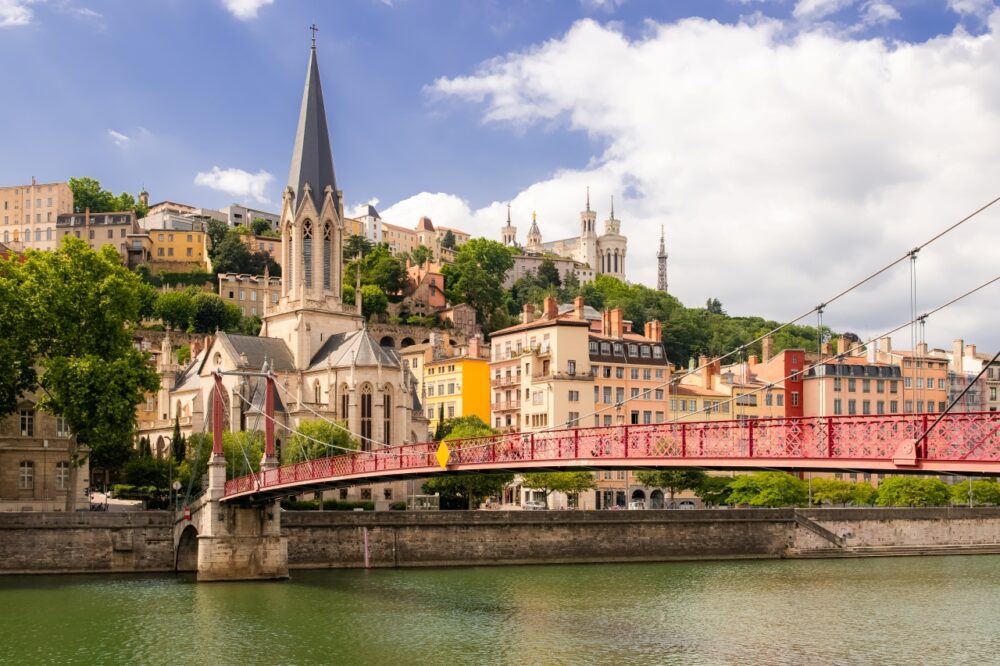
Vieux Lyon is one of the largest and best-preserved Renaissance districts in Europe, filled with colorful buildings, hidden courtyards, and charming cafés. The neighborhood is a maze of narrow alleyways, secret passageways known as traboules, and centuries-old architecture that makes you feel like you’ve stepped back in time.
I spent hours wandering through Vieux Lyon, discovering hidden traboules that once served as secret routes for silk workers and resistance fighters. Each street had something new to uncover, from tiny artisan shops to impressive Gothic churches. The district is a living museum, and every corner has a story to tell.
4. Incredible Panoramic Views from Fourvière Hill
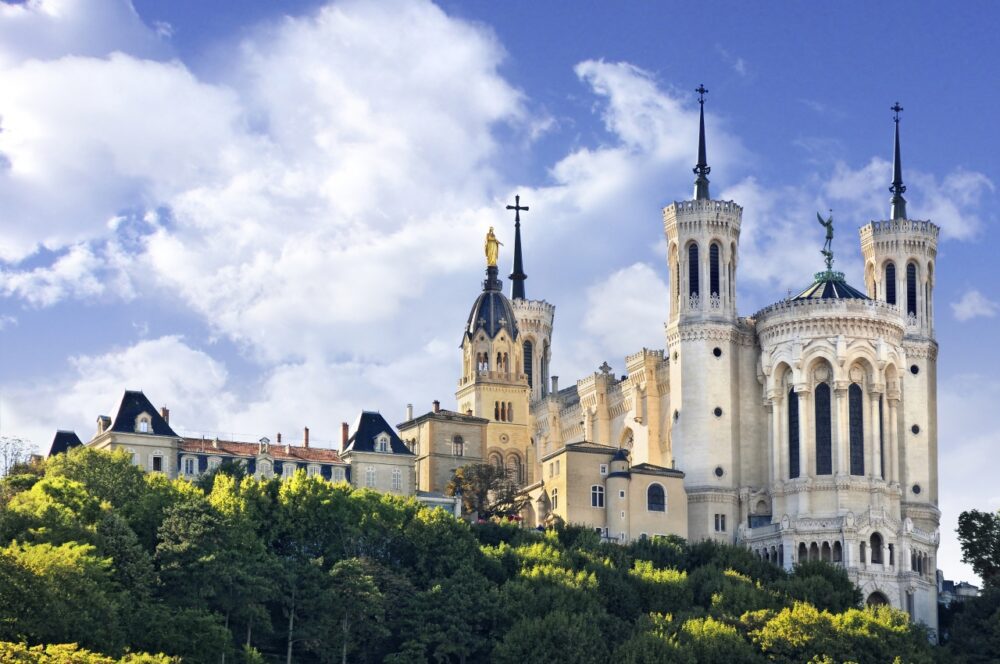
One of the best ways to see Lyon is from the top of Fourvière Hill, where you’ll find breathtaking panoramic views of the city. The climb up can be steep, but the reward is a stunning vista that stretches across the rooftops, with the Alps visible in the distance on a clear day.
I took the funicular up to the top and was greeted by the magnificent Basilica of Notre-Dame de Fourvière, an architectural masterpiece with intricate mosaics and towering spires. From the viewpoint just outside the basilica, I could see all of Lyon, from the red-tiled roofs of Vieux Lyon to the modern skyscrapers of the business district. It’s the perfect spot to take in the beauty of the city.
5. A Strong Silk-Weaving Heritage and the Famous Traboules
Lyon has a long history as the center of France’s silk industry, and its legacy can still be seen today in the Croix-Rousse district. The city’s traboules, a network of hidden passageways, were originally used by silk workers to transport fabrics without exposing them to the elements. Today, they remain one of Lyon’s most unique features.
I joined a guided tour of the traboules and was amazed at how many secret pathways exist behind ordinary doorways. Some led to beautiful courtyards with spiral staircases and Renaissance-style balconies, while others connected entire streets. Learning about Lyon’s silk-weaving history while exploring these hidden routes gave me a whole new appreciation for the city’s past.
6. A Thriving Cultural Scene with Museums, Theatres, and Festivals
Lyon is a city that celebrates culture in all its forms, from world-class museums to lively festivals and performances. The Musée des Beaux-Arts, often called the “little Louvre,” has an impressive collection of paintings, sculptures, and antiquities, while the Musée des Confluences explores the intersection of science, anthropology, and history.
I visited Lyon during the Fête des Lumières, the city’s famous Festival of Lights, and it was absolutely magical. Buildings, bridges, and public spaces were transformed into works of light art, with dazzling projections and glowing installations everywhere. The energy in the streets was incredible, and it was one of the most memorable cultural experiences I’ve ever had.
7. A Walkable and Bike-Friendly City
Lyon is one of the most pedestrian- and bike-friendly cities in France, making it easy to explore without relying on public transport. Many of the main attractions are within walking distance of each other, and the city’s extensive bike-sharing system, Vélo’v, makes cycling a convenient and enjoyable option.
I rented a bike and cycled along the Rhône River, following a dedicated path that took me past parks, bridges, and lively riverfront cafés. The city’s layout encourages slow, relaxed exploration, and the combination of scenic routes and well-maintained paths makes it perfect for both casual walkers and cyclists.
8. A City Surrounded by Stunning Wine Regions
Lyon is ideally located near some of France’s best wine regions, including Beaujolais and the Rhône Valley. This means that not only does the city have an outstanding selection of wines, but it also makes for a perfect base for wine-tasting day trips.
I took a short trip to the Beaujolais region, where rolling vineyards stretched as far as the eye could see. The winery tour included tastings of fruity, light-bodied reds, paired with local cheeses and charcuterie. Even if you don’t leave the city, every restaurant and wine bar in Lyon offers an incredible selection of local wines that pair perfectly with the city’s rich cuisine.
9. A More Relaxed and Authentic Alternative to Paris
While Paris is beautiful, it can sometimes feel overwhelming with its crowds, high prices, and fast pace. Lyon offers many of the same cultural and culinary experiences but with a more laid-back, authentic feel. The city is large enough to have a vibrant energy but small enough that it doesn’t feel rushed or overly touristy.
I loved how Lyon felt like a real, lived-in city, not just a place built for tourists. The people were friendly, the markets were filled with locals, and there was a relaxed rhythm to daily life. It’s a perfect destination for those who want to experience the beauty of France without the hustle of the capital.
10. The Rhône and Saône Rivers Create a Unique Waterfront Atmosphere
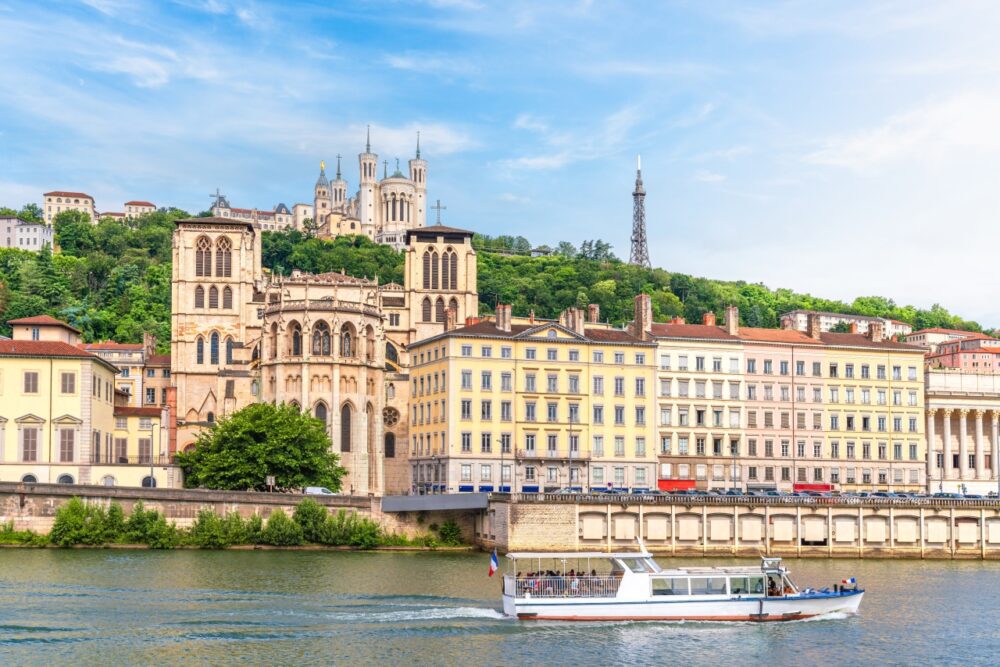
Lyon is built at the confluence of the Rhône and Saône rivers, and the waterfront areas provide beautiful spaces to relax, dine, and enjoy the scenery. The riverbanks have been transformed into pedestrian-friendly promenades, with parks, floating restaurants, and stunning bridges connecting different parts of the city.
I spent an evening at a riverside café, sipping wine while watching the sunset over the water. The boats cruising along the river, the soft golden light reflecting off the buildings, and the lively atmosphere made for a perfect way to end the day. Lyon’s rivers give the city an extra touch of charm and create some of its most picturesque spots.
Cons – Things You Should Consider When Visiting Lyon
1. The Weather Can Be Unpredictable and Uncomfortably Hot in Summer
Lyon experiences a mix of continental and Mediterranean climates, which means that the weather can be unpredictable throughout the year. Winters can be damp and chilly, while summers often bring intense heatwaves with temperatures rising above 35°C (95°F). The lack of coastal breezes makes the summer heat feel even more stifling, especially in the historic parts of the city where narrow streets trap the warmth.
I visited Lyon in August, and the heat made exploring feel exhausting. Even simple activities like climbing the hills of Fourvière or walking through Vieux Lyon became a challenge in the afternoon sun. Many older buildings and public transport systems lack air conditioning, which can make getting around uncomfortable. If you’re sensitive to heat, visiting in the spring or autumn is a much better choice.
2. The City’s Layout Can Be Challenging with Its Steep Hills
Lyon is built on two hills, Fourvière and Croix-Rousse, which offer incredible views but also require a lot of uphill walking. While the steep streets and staircases add to the city’s charm, they can also be physically demanding, especially if you’re not used to a lot of walking or have mobility issues.
I stayed in Croix-Rousse, and while the neighborhood was beautiful, walking up and down the hills every day quickly became tiring. Even though there are funiculars that take you up to Fourvière, many of the most scenic areas, like the traboules, require a fair bit of climbing. If you’re planning to explore these areas, wearing comfortable shoes and pacing yourself is essential.
3. The Public Transport System, While Good, Can Be Confusing at First
Lyon has a well-developed public transport system with buses, trams, metro lines, and even funiculars, but it can be a bit confusing for first-time visitors. Some metro lines stop running earlier than expected, and figuring out ticketing options—such as single tickets versus passes—can take some time to get used to.
On my first day in Lyon, I struggled to understand which ticket was best for multiple trips in a day, and the machines weren’t as intuitive as I had hoped. Some metro stations also require long walks between platforms, which can be frustrating when transferring lines. While the system is efficient once you get the hang of it, first-time visitors should take a moment to familiarize themselves with the routes to avoid unnecessary delays.
4. It Can Feel Quiet and Less Energetic in the Evenings Compared to Larger Cities
While Lyon has a great food scene and some lively nightlife areas, it doesn’t have the same electric, late-night energy as Paris or Marseille. Many restaurants close earlier than expected, and some neighborhoods feel very quiet after dark, especially outside of the Presqu’île and Vieux Lyon districts.
One evening, I went looking for a late-night café around Croix-Rousse and found that most places had already closed by 10 p.m. Even in the city center, some restaurants started shutting down their kitchens earlier than expected, which was surprising for a city known for its culinary scene. While there are bars and clubs that stay open late, those looking for an all-night party atmosphere might find Lyon a little subdued.
5. Some Areas Feel Less Polished or Are in Need of Maintenance
While Lyon is generally a beautiful and well-maintained city, some parts, particularly around the train station and certain suburbs, feel a bit neglected. Graffiti, litter, and rundown buildings are noticeable in some areas, and while they don’t make the city unsafe, they can take away from its otherwise charming appearance.
I noticed this particularly around Gare Part-Dieu, where the modern development felt at odds with the rest of the city’s elegant architecture. Some side streets in the outskirts also had a slightly worn-down feel, with empty storefronts and unkempt public spaces. While this doesn’t impact the main tourist areas, visitors expecting a perfectly polished cityscape might be surprised by some of Lyon’s rougher edges.
When to Visit Lyon
The best times to visit Lyon are spring (April to June) and early autumn (September to October), when temperatures are comfortable, the city’s parks and riverbanks are lush, and the crowds are manageable. These months allow you to fully enjoy Lyon’s blend of history, cuisine, and culture at a relaxed pace. Summer (July and August) is warm and vibrant, with many open-air events, though it’s also the busiest time. Winter in Lyon is quieter, but December is an exception, when the Fête des Lumières lights up the city in a spectacular display, drawing visitors from all over.
How to Get to Lyon
Lyon-Saint Exupéry Airport (LYS), located about 25 kilometres from the city centre, is the main airport, with connections on airlines like Air France, Lufthansa, and easyJet. From the airport, the Rhônexpress tram takes around 30 minutes to reach the central Part-Dieu station. For those arriving from Paris, the high-speed TGV trains make Lyon very accessible, with trips taking just over two hours from Paris Gare de Lyon to Lyon Part-Dieu. Lyon is also well-connected by train to other major French cities, making it an ideal stop on a French itinerary.
Where to Stay in Lyon
Lyon offers a variety of neighbourhoods, each with its unique charm and range of accommodation:
- Luxury: Presqu’île – This central area between the Rhône and Saône rivers is perfect for high-end stays close to shopping, dining, and attractions. Hotel Carlton Lyon and InterContinental Lyon – Hotel Dieu are both elegant options within easy reach of the city’s historic sites and vibrant atmosphere.
- Mid-range: Vieux Lyon – The historic Old Town, with its Renaissance architecture and charming traboules (hidden passageways), is ideal for those seeking a more atmospheric experience. Consider Cour des Loges or Hotel Saint-Paul, which offer comfort and charm in a historic setting.
- Budget: La Croix-Rousse – Known for its bohemian vibe and great views, this hillside neighbourhood offers a range of budget-friendly stays, like Ho36 Hostel and Hotel de la Croix-Rousse, while being well-connected by metro to the city centre.
Getting Around Lyon
Lyon’s TCL public transport network includes a comprehensive system of buses, trams, and metro lines, making it easy to navigate the city. Single tickets and day passes are available, and a Lyon City Card offers unlimited transport along with free or discounted access to major attractions. Lyon is also a very walkable city, particularly in Presqu’île and Vieux Lyon, where exploring on foot allows you to fully appreciate the architectural details and hidden courtyards. The Vélo’v bike-sharing system is convenient for cycling along the riverbanks or around Parc de la Tête d’Or, with numerous stations available city-wide.
How Long to Spend in Lyon
Three to four days in Lyon is ideal, allowing time to explore the Old Town, sample local cuisine in traditional bouchons, and visit highlights like Basilica of Notre-Dame de Fourvière and the Museum of Fine Arts. With four days, you’ll have the chance to dive into Lyon’s culinary scene, visit Les Halles de Lyon Paul Bocuse for gourmet foods, and enjoy a stroll through Parc de la Tête d’Or. If you’re a wine enthusiast, consider adding a day trip to the nearby Beaujolais or Rhône Valley wine regions to experience tastings and vineyards just a short ride from the city.
Conclusion
So, is Lyon worth visiting? Absolutely! With its rich history, stunning architecture, and world-renowned culinary scene, Lyon is a city that delivers on every level. Highlights like Vieux Lyon, the Basilica of Notre-Dame de Fourvière, and the endless food options make it a must-visit destination. While it doesn’t have the tourist buzz of Paris, its authenticity and charm make it even more appealing. If you’re ready to experience the heart of French culture and cuisine, start planning your trip to Lyon today!
